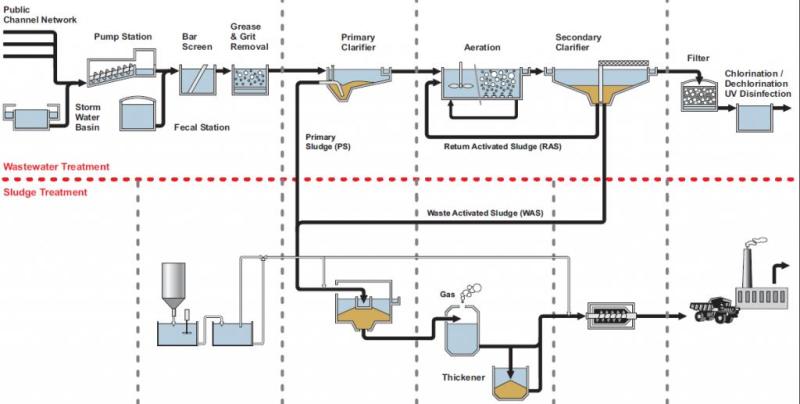Hi everybody. This question might seem stupid, but I just can't figure it out.
I am participating in a design of a municipal WWTP. We have two secondary clarifiers and one sludge pumping station with submersible pumps, for the sludge from the clarifiers. The sludge flows by hydrostatic pressure from the bottom of the clarifier to the sludge pumping station. Concerning the fact that these two objects (clarifier and pump station)are communicating vessels, the liquid level in both of them should be the same. So, when I start the pump in order to recirculate the sludge, the liquid level is going to drop, both in pump station and in clarifier, going below the weir level in clarifier.
My colleague suggests that the sludge shouldn't be discharged from the clarifier to the pump station on a continuous basis, but I am quite sure that this should be a continuous process.
So, my question, or better be said a plea is: Could somebody clarify my the whole process control of secondary sludge, as detailed as possible.
Thank you very much in advance,
Mirko
I am participating in a design of a municipal WWTP. We have two secondary clarifiers and one sludge pumping station with submersible pumps, for the sludge from the clarifiers. The sludge flows by hydrostatic pressure from the bottom of the clarifier to the sludge pumping station. Concerning the fact that these two objects (clarifier and pump station)are communicating vessels, the liquid level in both of them should be the same. So, when I start the pump in order to recirculate the sludge, the liquid level is going to drop, both in pump station and in clarifier, going below the weir level in clarifier.
My colleague suggests that the sludge shouldn't be discharged from the clarifier to the pump station on a continuous basis, but I am quite sure that this should be a continuous process.
So, my question, or better be said a plea is: Could somebody clarify my the whole process control of secondary sludge, as detailed as possible.
Thank you very much in advance,
Mirko

